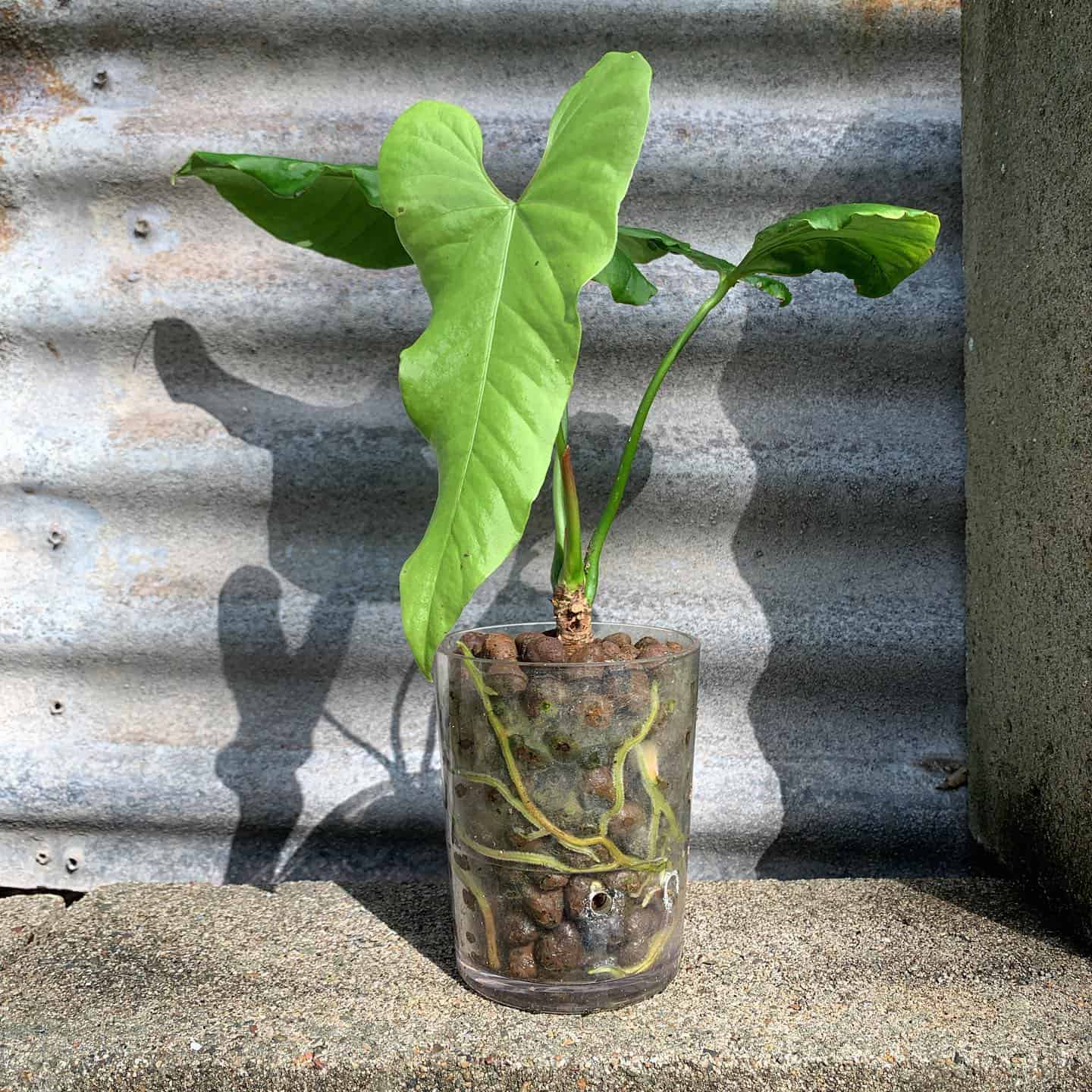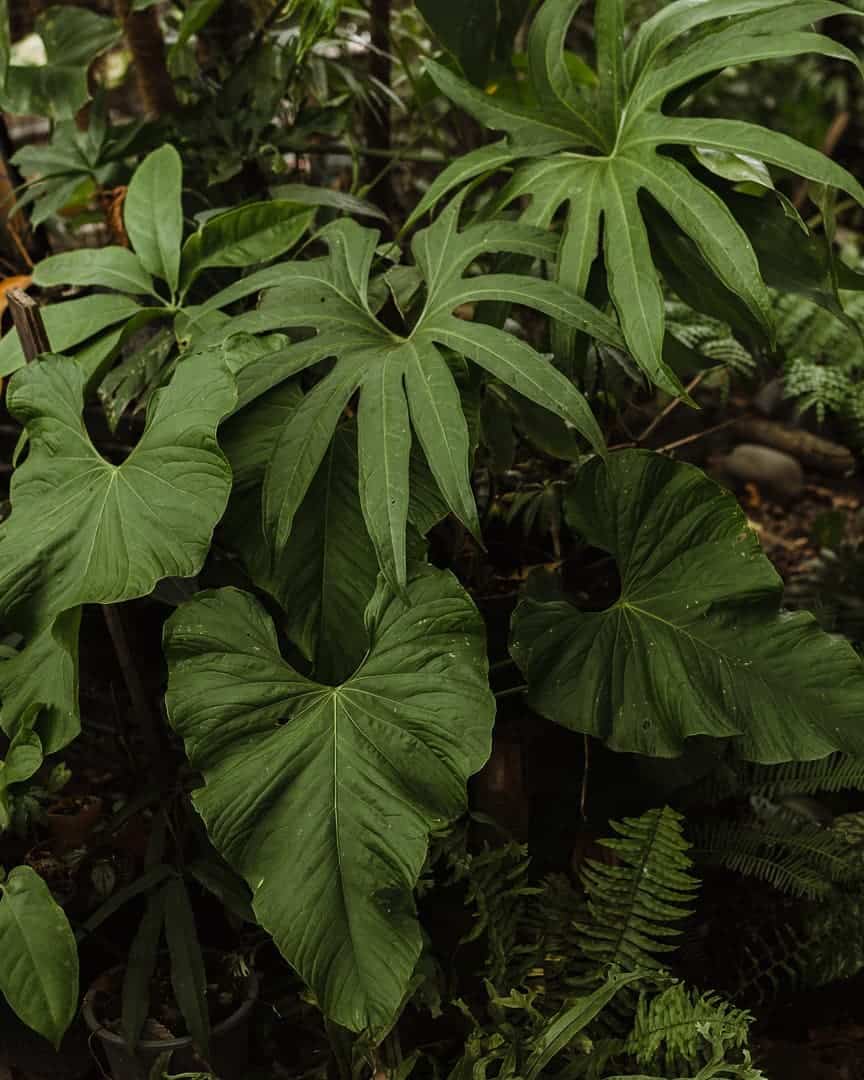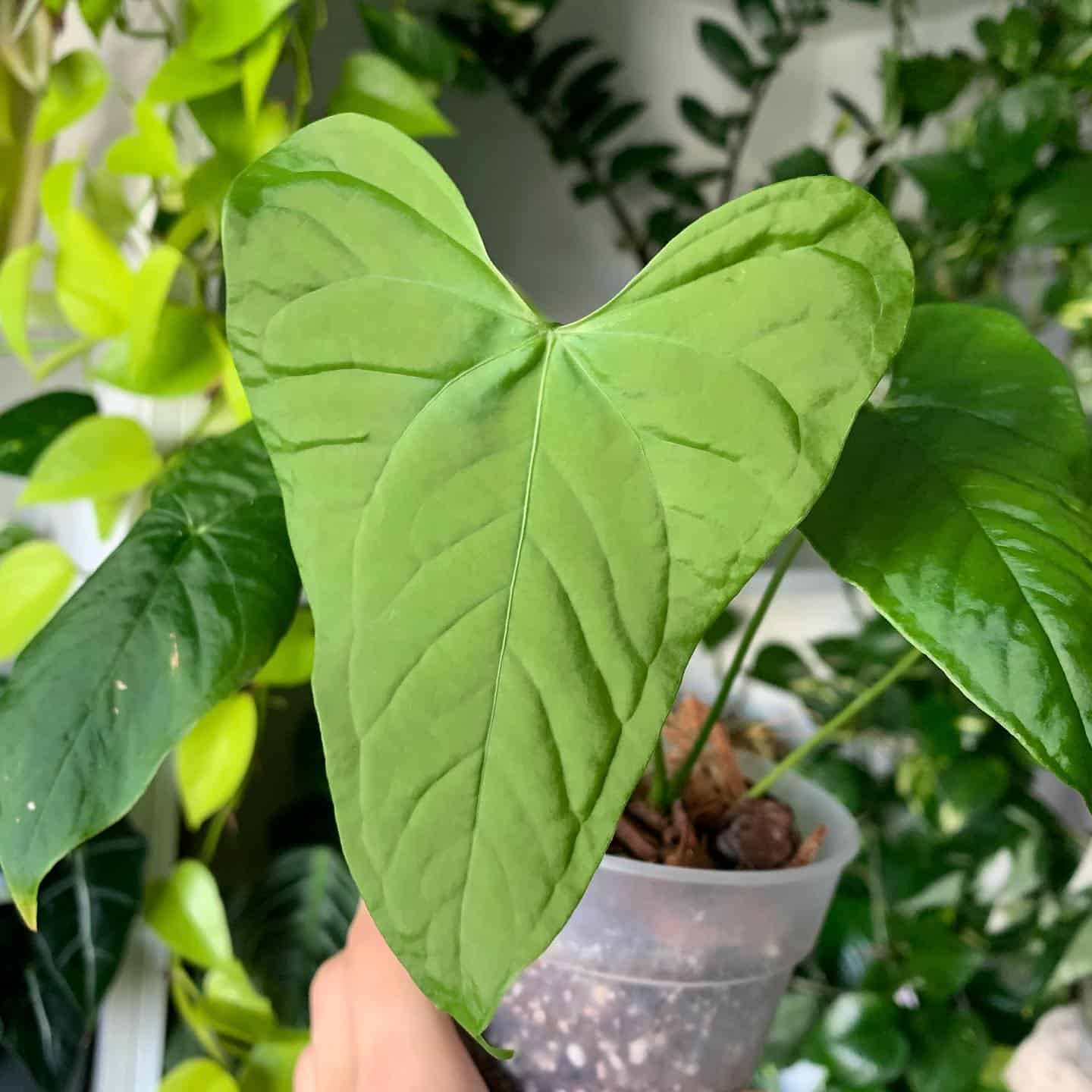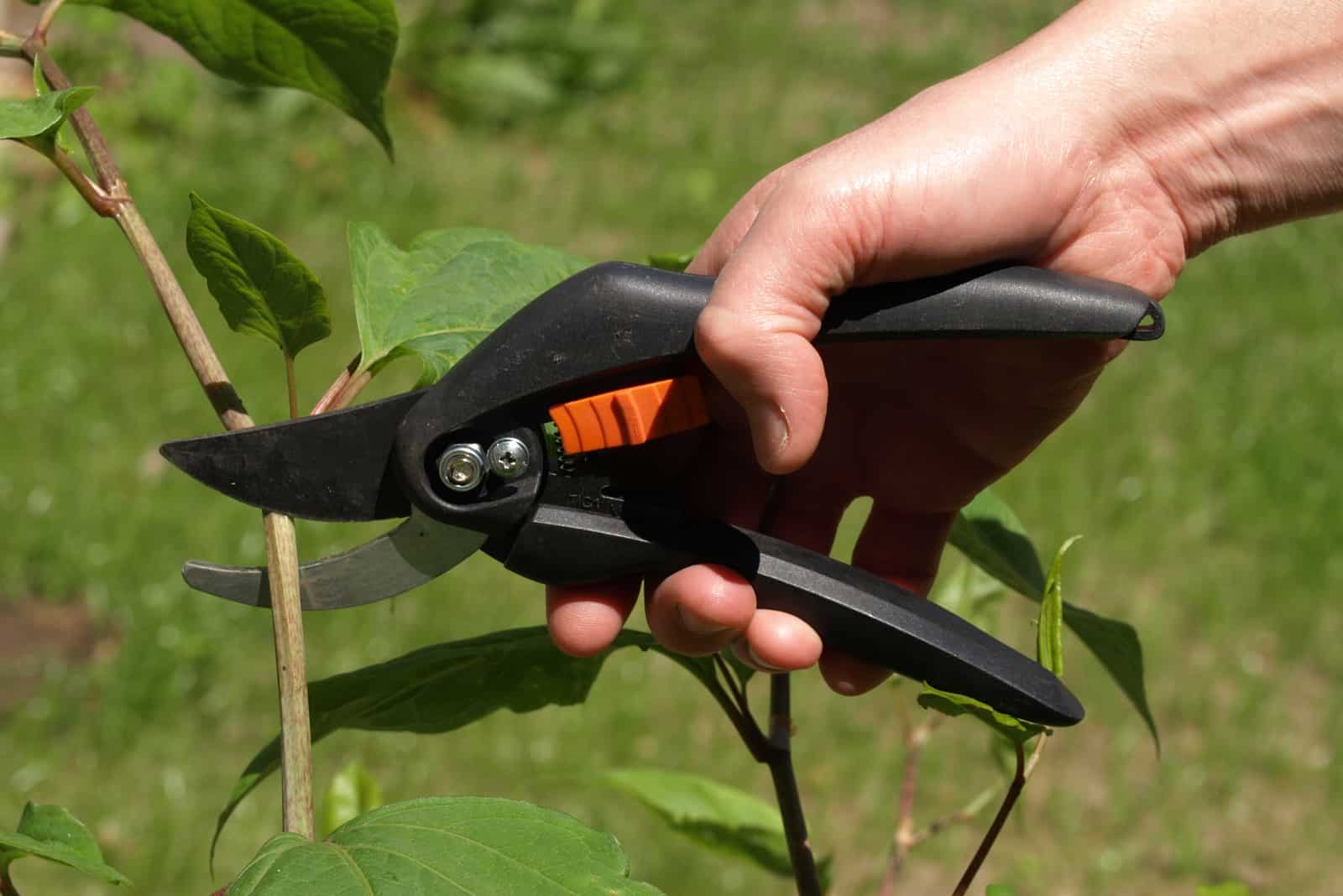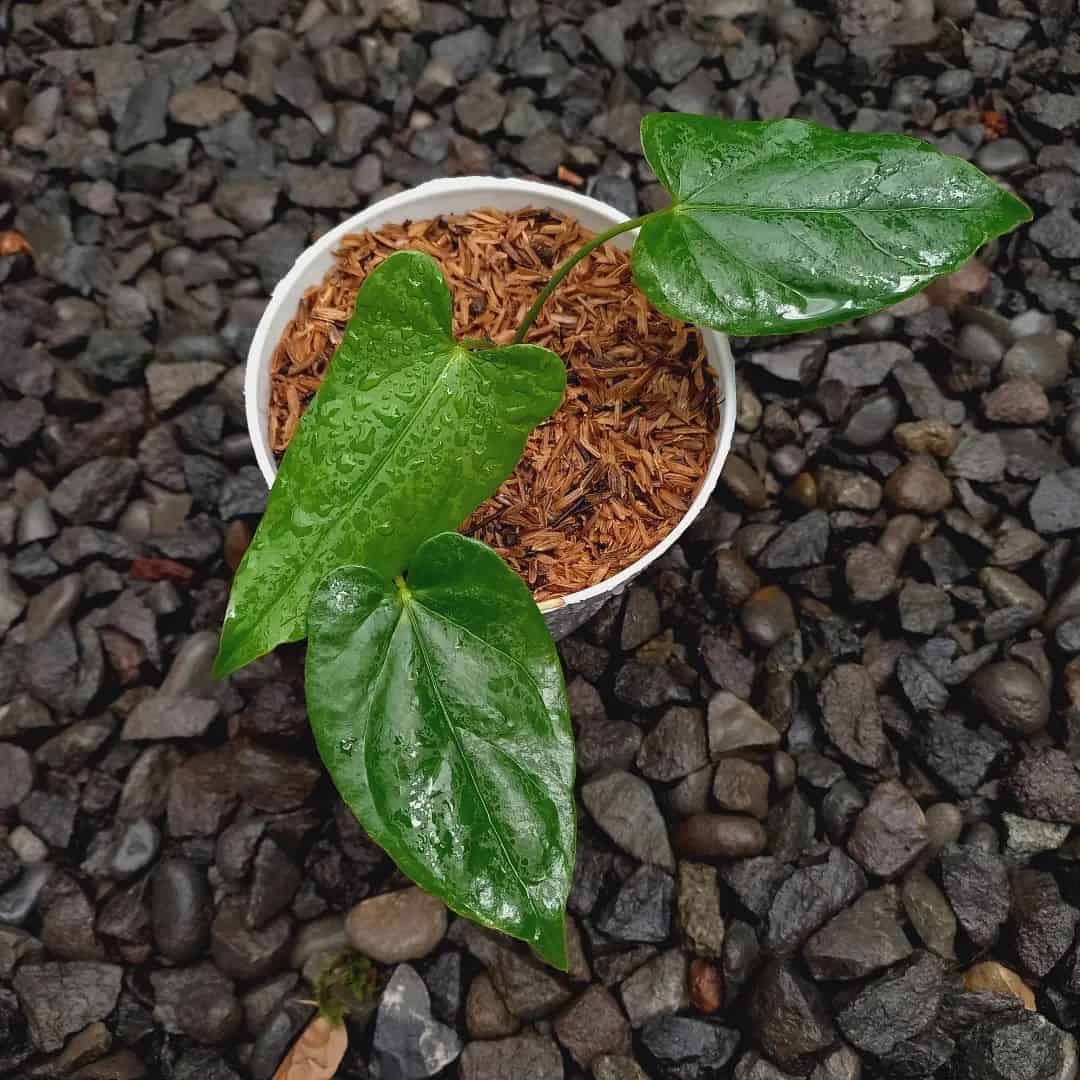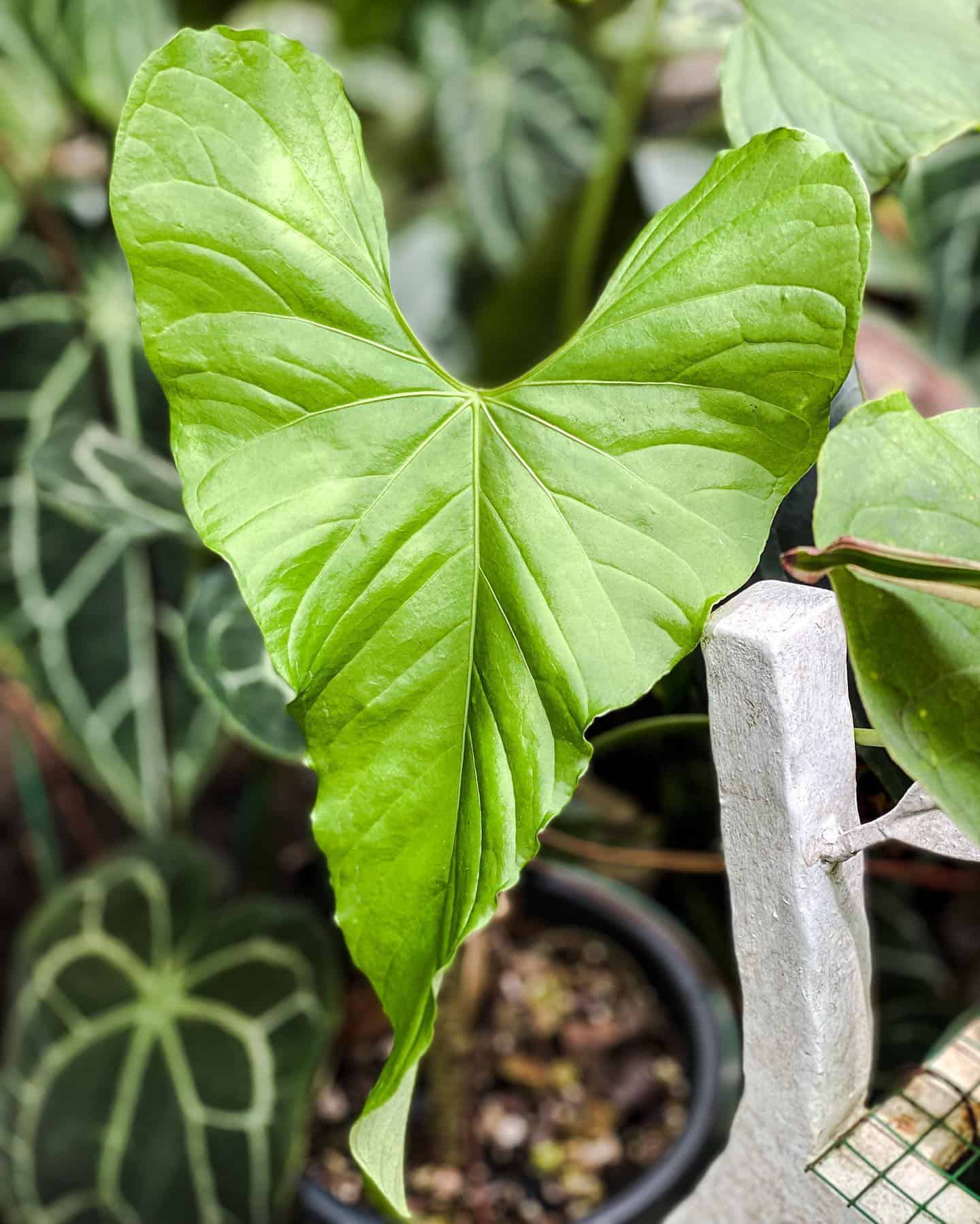The Anthurium Balaoanum is an indispensable part of every exotic garden. Its giant leathery leaves fill you with amazement, and you simply can’t look away.
There is something fearfully mesmerizing about this plant that we want to bring to every home and not just limit it to botanical gardens.
Let’s look at some general specifics before we get into more detail:
[table id=105 /]This article brings you an extensive care guide, even though this plant doesn’t require too much care.
We leave nothing to chance, so you’ll learn everything you need to know to grow a healthy Anthurium plant.
You will also read about the most common issues, so you know how to deal with them if it ever comes to that.
Finally, we’ll bring you some interesting facts about this plant and some propositions for plants to keep it company.
Let’s start!
The Anthurium Balaoanum Care Guide
This Flamingo plant is pretty low-maintenance, but you need to remember a couple of things before buying one at the nursery.
If you want to provide it with excellent plant care, you need to keep it away from direct sunlight, water it when the soil feels dry to the touch, and plant it in a well-draining medium.
The following section is a detailed account of all the things you must pay attention to.
Light
Photo from: @brissteveplants
The Anthurium Balaoanum is a tropical plant that is used to living in the protection of tall trees. If you’re about to grow one in your home, you need to ensure that it gets the same filtered light.
This vine needs bright indirect light in order to produce the best leaves and to grow into a healthy plant.
However, an A. Balaoanum can tolerate short exposure to direct sun before it starts scorching its leaves.
You can keep this attractive plant in an east-facing window, as the morning sun is not so harsh and will not burn the foliage.
However, don’t expose it to midday sun if you don’t want to have a burnt plant.
You can also keep it in a west- or south-facing room, but don’t place it close to the windows. Move it a few feet away so that the sun’s rays cannot reach the leaves.
Water And Humidity
The A. Balaoanum is an aroid, which means that it has moderate watering needs. Therefore, you should allow the top 2-3 inches (5-7.5 cm) of the soil to dry between watering.
Watering only when the topsoil is dry is a great way to prevent overwatering and root rot.
Irrigate the plant until you notice that the water has started to drain through the potholes. Allow the excess water to flow out and remove the remaining water from the saucer.
Also, you won’t have to water this plant frequently in fall and winter because that’s when it enters dormancy and doesn’t use as much water.
However, you have to water them more often in summer, especially if you live in a hot, arid region.
Most importantly, there isn’t a fixed formula of how much exactly you should water your Anthurium. If the weather is scorching, you might have to water it several times throughout the week, and if the humidity levels are high, your plant won’t have a great need for water.
Humidity
Balaouanums love moisture, and even though they don’t have great watering needs, they need high humidity environments in order to thrive.
The humidity in most of our homes is moderate at best, and you need to raise it if you want to have a happy anthurium. It flourishes in places with humidity levels between 60 and 70%, but it can tolerate a lower humidity for short periods of time.
There are many creative ways to increase the humidity in your home, and we bring you our favorites.
The pebble tray method. The pebble tray method probably won’t work on old and large Balaoanums, but it is perfect for new and young plants.
First, you need to find a tray deep enough so you can fill it with pebbles or gravel and water. Then, you simply have to put the container in which you grow your Anthurium on top of it, and that’s it.
The evaporating water will humidify the air around your plant, and the small rocks will keep the water away from your plant’s roots.
Using humidifiers. Humidifiers are an excellent way of increasing humidity if you have a few extra dollars to spend.
Your plant will be thrilled, and if you live in a more arid region, you can say goodbye to dry air for good.
Spraying with water. Misting your plant’s foliage is probably the easiest method of increasing the humidity.
However, you have to be careful because constantly wet foliage may lead to fungal infections. Therefore, you should allow the leaves to dry between misting, and if you’re using some other way of increasing humidity, you don’t have to spray your plants with water.
Placing the plant in the bathroom. The last piece of advice we have in store for you is to move your A. Balaoanum to the bathroom.
A bathroom has the perfect level of humidity, but it might feel like you’re hiding the plant. However, we have given you plenty of options to choose from.
Climate And Temperature
Photo from: @halamarn
The Anthurium Balaoanum is native to rainforests, and it loves tropical climates, which are marked by their high humidity levels and warm temperatures.
It thrives in mild temperatures between 65-90 °F (18-32 °C), and it cannot survive temperatures lower than 60 °F (15 °C).
If exposed to low temperatures for 12-24 hours, it will fall into cold shock and likely die.
Also, plant shock can be caused by sudden temperature swings and drafts, so you should avoid placing your plant near an AC.
Soil And Fertilizer
Anthuriums are aroids, and they prefer a well-drained, well-aerated, and fertile potting mix. You can use a soil mix for aroids or make your own.
If you prefer homemade soil mixes, you can mix 30% of your favorite potting soil, 40% bark chips or orchid bark, 20% peat, and 10% vermiculite or perlite. You can also add peat moss, which retains moisture and releases it when the plant needs it.
We always add a bit of horticultural charcoal too, as it removes any impurities that can be found in the soil.
Of course, you don’t need to use these exact ingredients; make sure though, that the soil is rich in nutrients and organic matter and provides good drainage and aeration.
This mix is perfect for all your aroids and tropical plants, such as anthuriums, but also your philodendrons, alocasias, and monsteras.
Fertilizer
The A. Balaoanum is not a heavy feeder, but it still needs extra food from time to time. You can fertilize your Anthurium once or twice a month with a well-balanced fertilizer such as triple 10, diluted to quarter-strength.
However, you can also fertilize this plant once a week, but you need to highly dilute it so that you don’t kill your plant.
Also, always water the plants before fertilizing because this reduces the risk of salt build-up and over-fertilization.
Finally, you should flush the soil every few months because the salt build-up may lead to fertilizer burn.
Repotting
The Anthurium Balaoanum doesn’t grow quickly when grown as a houseplant, and it even benefits from being slightly root bound, as this reduces the risk of water clogging.
However, you should repot it once every other year as fresh soil contains plenty of the nutrients that this vine needs.
Choose a container one or two sizes larger than its current one, fill it with a new substrate, and water it thoroughly.
You should always repot your plants during their growing season, preferably in spring, so that their root systems have enough time to acclimatize to the new soil before dormancy.
Also, an Anthurium Balaoanum actively grows in spring and summer and will grow faster if repotted during its growing season.
Here are some great tips for growing and repotting A. balaoanum.
Propagation
Photo from: @greeneriii
Thankfully, this anthurium variety is easily propagated, and there are several different ways to do it.
Below you can find our 3 favorite (and easiest) ways of propagating an A. Balaoanum.
Propagation By Stem Cuttings
Propagation by stem cuttings is pretty straightforward. First, you need to choose a healthy stem with leaves on it, cut it as close to the base as possible, and leave the plant overnight (or longer) to develop a callous over the wound.
Then, put it in water or soil, place it in a bright spot, and mist the foliage from time to time.
If you’re propagating in water, you should change the water every 2 days and remove any leaves that are submerged in water, as they will only rot and contaminate the water.
When propagating in soil, dip the cut stem in rooting hormone as this speeds up the development of the root system.
You should plant the anthurium in a pot as soon as you notice that the roots are developing. You will know that your soil propagation has worked if the leaves haven’t fallen off after 4-8 weeks and you see new growth.
Propagation By Air Layering
Propagation by air layering is a bit more complicated than by stem cuttings, but you can try it and see if it’s more suited to you.
When propagating by air layering, you need to make an incision on a healthy stem with aerial roots.
Cut the stem below the leaf node and wrap it with a plastic bag filled with peat moss. Punch a few holes in the plastic wrap so that you can mist the moss.
After several weeks, you should notice new roots developing, and that’s your cue to remove the moss and the plastic wrap.
Then, all you have to do is remove the roots from the plant by cutting the stem. Plant it, keep the soil moist, and new leaves will be sprouting in no time.
Here’s a video that can help you propagate all your aroids by air layering.
Propagation By Seed
Propagation by seed takes more time than the previous methods, but we decided to explain it as well, as you never know when you might come across some Anthurium Balaoanum seeds.
You need to prepare a fertile, well-draining substrate before planting the seeds. We always love to add compost to enrich the soil and make sure that we’ve done everything in our power to bring the new plant to life.
Next, you just have to plant the seeds 1 inch (2,5 cm) apart, cover them with the same mix, and after about 2 months, you should notice new leaves protruding through the soil.
Pruning And Cleaning
Every plant responds well to pruning, and if you cut a few old leaves from your A. Balaoanum, you’ll only give it more energy to grow faster and bushier.
You should also remove any diseased and sunburnt foliage, as they only waste energy and present a danger to healthy leaves.
However, you should never prune more than 1/3 of the entire plant because extensive pruning can do the opposite and stunt the plant’s growth.
Cleaning
You should also clean your plant regularly as nothing is attractive and worth looking at if it’s covered with a layer of dust.
Use a wet cloth and wipe the dust, leaving the foliage to dry on its own. This is also a suitable method of raising the humidity instead of misting.
However, if you have other methods of increasing the humidity levels, you should dry the leaves after wiping, as too much moisture can lead to leaf spot and other fungal diseases.
Common Issues
No houseplant is entirely resistant to pests and diseases.
In this section, we’ll bring you the solutions to the most common issues this plant has to deal with.
But remember, the plants are less likely to get infested or infected if you tend to their needs!
Pests
Sadly, this anthurium species is not resistant to pests like spider mites, thrips, aphids, and mealybugs.
However, these bugs only attack plants that aren’t in perfect condition, either because of wet foliage or not enough sunlight.
The best way to remove them is by spraying the plant with pesticides such as neem oil.
However, before spraying, always separate the plant from the rest of its buddies so that you don’t have to hire exterminators.
Diseases
Photo from: @galerihijau.25
The most common diseases that attack this plant are leaf spot and root rot.
Leaf spot is caused by wet foliage, and you can recognize it by yellow, brown, or black marks on the foliage. You need to move the plant to somewhere where it can’t infect other plants, then cut the diseased foliage, and spray it with a fungicide if necessary.
However, this problem is easily avoided; don’t let the foliage stay wet for too long, and you won’t have to be doing this extra work.
Root rot is caused by overwatering, and if you notice that your plant is drooping, its growth has stunted, and that it has yellow leaves, you need to check its roots immediately.
Roots infected with root rot are dark and mushy, and you will have to remove them all before repotting the plant.
Remember, overhydration kills!
Yellow Leaves
The most common reason for yellow leaves is overwatering, but underwatering is equally as bad and has similar symptoms.
Other causes of yellow foliage are inconsistent humidity, not enough nutrients and bad soil quality, too much sunlight, and plant shock due to low temperatures.
Thankfully, you can avoid these issues by simply following the plant’s care guide.
Brown Leaves
Brown leaves are usually caused by sun damage, and once burnt, they have to be removed.
Also, if the humidity levels are really low, the foliage will turn brown and crispy.
Discolored foliage is dull and certainly not attractive, but you can avoid it easily as this plant doesn’t ask for much.
For Those Who Want To Know More
Photo from: @husna.hijau
We’re finished with the main part of this article, but there are many more things about the A. Balaoanum that you should know.
In this section, we bring you its history and appearance, which may help you take that step towards owning a unique garden.
We also bring you some other Anthurium varieties, in case you have liked this plant so much that you want to create an anthurium-themed garden.
Background And History
The Anthurium Balaoanum belongs to the Araceae family. It was formerly known as the Anthurium Dussii and Anthurium Guildingii, but it was renamed Balaoanum.
This epiphyte is still confused with the A. Guildingii, even though they are different species.
The name Anthurium comes from the Greek anthos (flower) and oura (tail), and once you look at it, you’ll immediately realize why it was named that way.
Flowers And Foliage
The most striking thing about this anthurium is its foliage. They may not be variegated, but their leathery texture makes up for that.
The leaves look like giant green hearts and can be light to dark green, but they are as thin as tissue paper.
Their flowers are not as impressive as their leaves, but they do complete the look with their green-yellow spathe, wrapped around the spadix.
However, the spathe turns brown or maroon, which gives it a whole new dimension.
Other Anthurium Varieties
Anthuriums are unique plants, and we have never met anyone that has complained about them.
That’s why we have decided to present to you 2 species that complement an Anthurium Balaoanum.
The Anthurium Effusilobum
An A. Effusilobum is quite similar to a Balaoanum, but its leaves are more elongated than the Balaoanum’s.
Also, its leathery foliage looks more like a medieval sword or arrowhead than a heart, and it is usually light green.
The Anthurium Radicans
An A. Radicans is an anthurium species that cannot be confused with a Balaoanum. It does have a textured surface, but it resembles dragon scales.
It is also heart-shaped, but this heart is more rounded than the Balaoanum’s, and it’s almost always dark green.
Frequently Asked Questions
Photo from: @backyard_jardintherapy
Believe it or not, there are many more interesting facts about the Anthurium Balaoanum, and sadly, we cannot discuss all of them.
However, this section brings you the answers to your most frequently asked questions, which should satisfy your curiosity.
What are the benefits of the Anthurium Balaoanum?
The Anthurium Balaoanum is a super-plant that can purify the air and remove or reduce toxins, such as toluene, formaldehyde, xylene, and ammonia.
It uses oxygen at night but produces much more during the day. Finally, it is also considered a lucky plant that Feng Shui followers swear by.
What is the lifespan of the Anthurium Balaoanum?
This anthurium species may live for 5 years, or longer if you take care of it well.
You only need to make sure that it gets enough light, water, and that it is never waterlogged. Don’t stress your plant, and you’ll get to enjoy its foliage for many years!
What is the difference between an Anthurium and an Anthurium Balaoanum?
An Anthurium is just a genus, whereas the Anthurium Balaoanum is a specific species of the genus Anthurium.
Is an Anthurium Balaoanum rare?
The Anthurium Balaoanum is not a rare plant, and you can order seeds or whole plants online.
Seeds cost less than $10, whereas grown plants are usually between $100-$150.
But, don’t let the price scare you! This plant lasts for many years, and you can easily propagate it and create perfect gifts for your friends.
The native habitat of this plant is limited to Ecuador and a small part of Peru, but its exotic foliage decorates thousands of homes around the globe.
Summing Up
The Anthurium Balaoanum is an amazing plant with many benefits and is easily taken care of.
It needs bright, filtered light, water when the topsoil is dry, a well-draining medium, and high humidity to grow big and strong.
It is a large plant, and if you don’t have space for it in your home, you can always grow it outside. However, it favors tropical climates, so you will have to move it indoors if the outside temperatures get too low or if the humidity levels are really low.
There are also some other great plants from the Anthurium genus that will transform the way your home looks too.
Until next time!
Like this post? Share or pin it for later!


